Odoo Review 2025: Pros, Cons, and a Smarter Alternative

From CRM portals and sales to inventory management and invoicing, Odoo’s modular system covers nearly every back-office function. But for many growing businesses, this open-source ERP platform raises a practical question: is it the best fit for how you work, especially when client-facing communication is a priority?
In this Odoo review, you’ll see what Odoo does well, how its pricing works, what real users say about it and when it might not be the right fit. We also have an alternative that can help your business manage secure, branded client collaboration more easily.
What Is Odoo?
Odoo is an open-source enterprise resource planning (ERP) platform with more than 30 integrated business applications. It combines tools for CRM, sales, accounting, inventory, HR, project management, website building and e-commerce.
As an ERP system, Odoo is most useful to SMEs and enterprises that need flexibility and customization options. It lets you add or remove modules as needed and adjust them to your processes. The open-source framework enables customizing apps, building new features and connecting Odoo with other software.
See also: Top 5 Odoo Alternatives for Client Portals
Odoo key features

Odoo is built around a modular app structure, letting you choose the tools that fit your company and add more as you grow. Some of the main features include:
- CRM and sales: Manage your sales process, track leads, send quotes and automate follow-ups.
- Project management: Plan projects, assign tasks, track deadlines and collaborate with your team.
- Inventory management software: Monitor stock levels, track shipments and handle warehouse management.
- Invoicing and accounting: Create invoices, manage payments and keep your accounting up to date.
- eCommerce and website builder: Build your business website and online store with drag-and-drop tools.
- Email marketing: Design email campaigns and track performance to reach your customers.
- Timesheets: Log billable hours and track time spent on tasks and projects.
- Document signing: Send and sign digital business documents securely.
- Custom app development: Build your own apps or adjust existing ones to fit your workflows.
- Integrations: Connect Odoo with other tools like Google Workspace, Zapier and third-party apps.
Odoo pricing explained
Odoo’s pricing has become more transparent over time, which many users appreciate since older versions often led to surprise costs for add-ons or extra support. In this Odoo review, we’ll explore the newest pricing model (monthly payment version).

Here’s how it works.
One App Free
You can use one Odoo app for free with unlimited users. If your chosen app depends on other apps (like eCommerce needs Website and Invoicing), those required apps are included for free too. Hosting on Odoo Online, daily backups, security and access to their eLearning platform are also included.
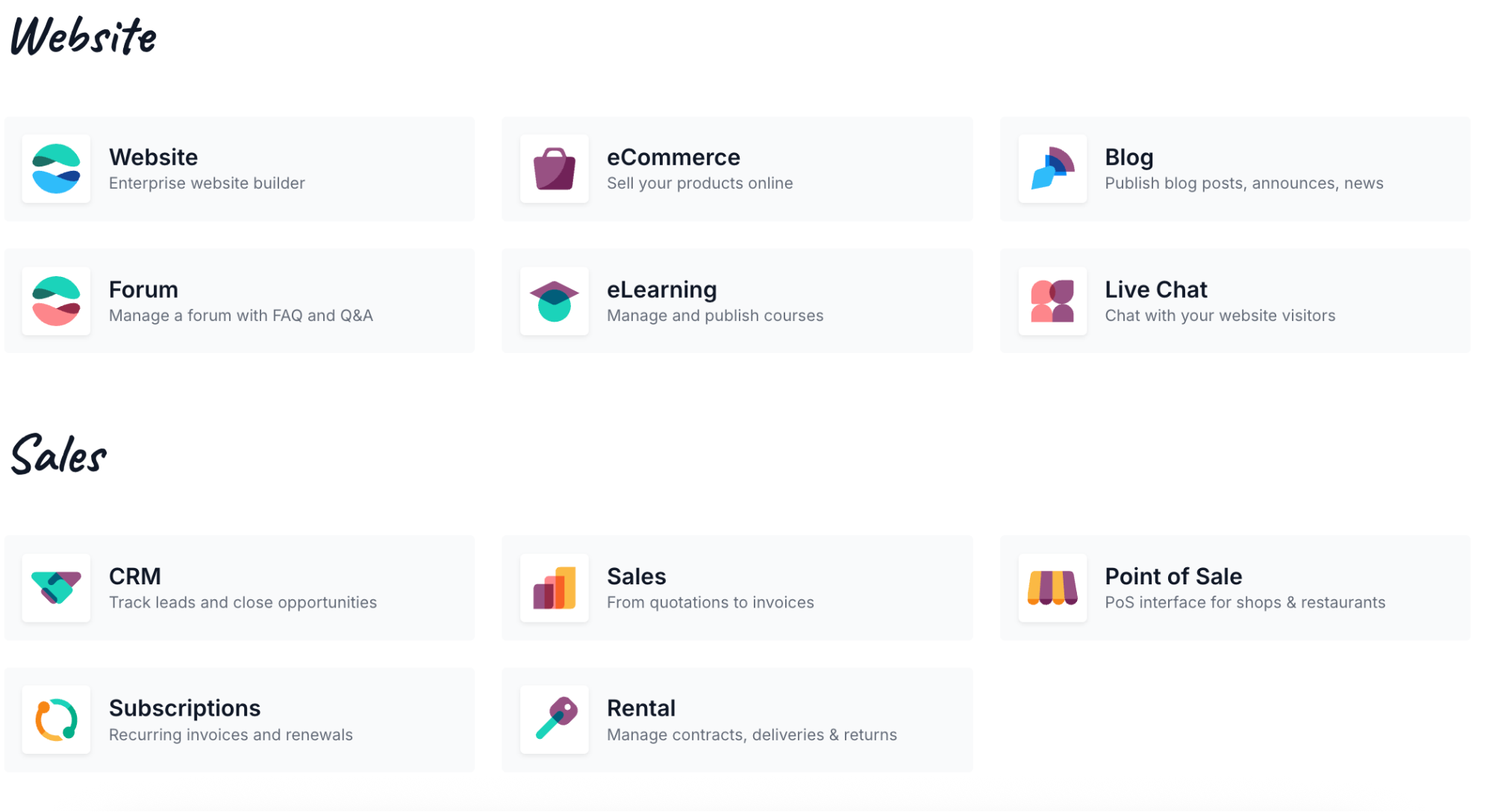
Standard Plan
Starts at about €14.80 per user each month (or €18.60 with taxes and fees) when billed monthly, or €11.90 when billed annually. This gives your business access to all Odoo apps on Odoo Online. You get hosting, daily backups on two continents, security, email integration, upgrades and support by email from Monday to Friday.
Custom Plan
Starts at €17.90 per user each month for the annual plan or €22.40 monthly (€28.00 with taxes and fees). This plan includes everything in the Standard plan plus Odoo Studio for custom apps, multi-company management, external API access and more flexible hosting options (Odoo Online or Odoo.sh).
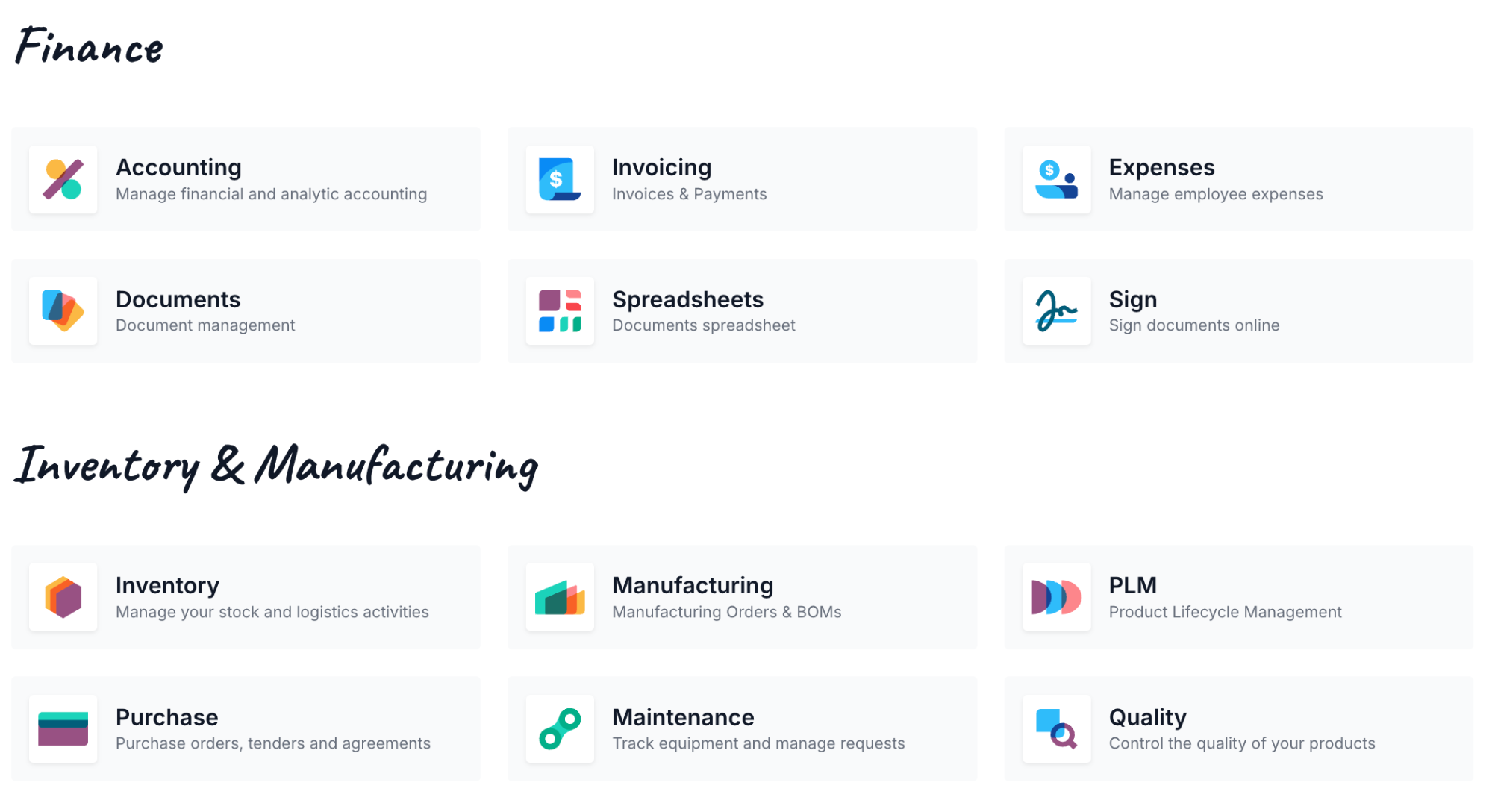
What’s included
All paid plans include scalable cloud infrastructure, security, monitoring, unlimited email support and upgrades. Customers and suppliers who access your system through the customer portal do not count as paying users.
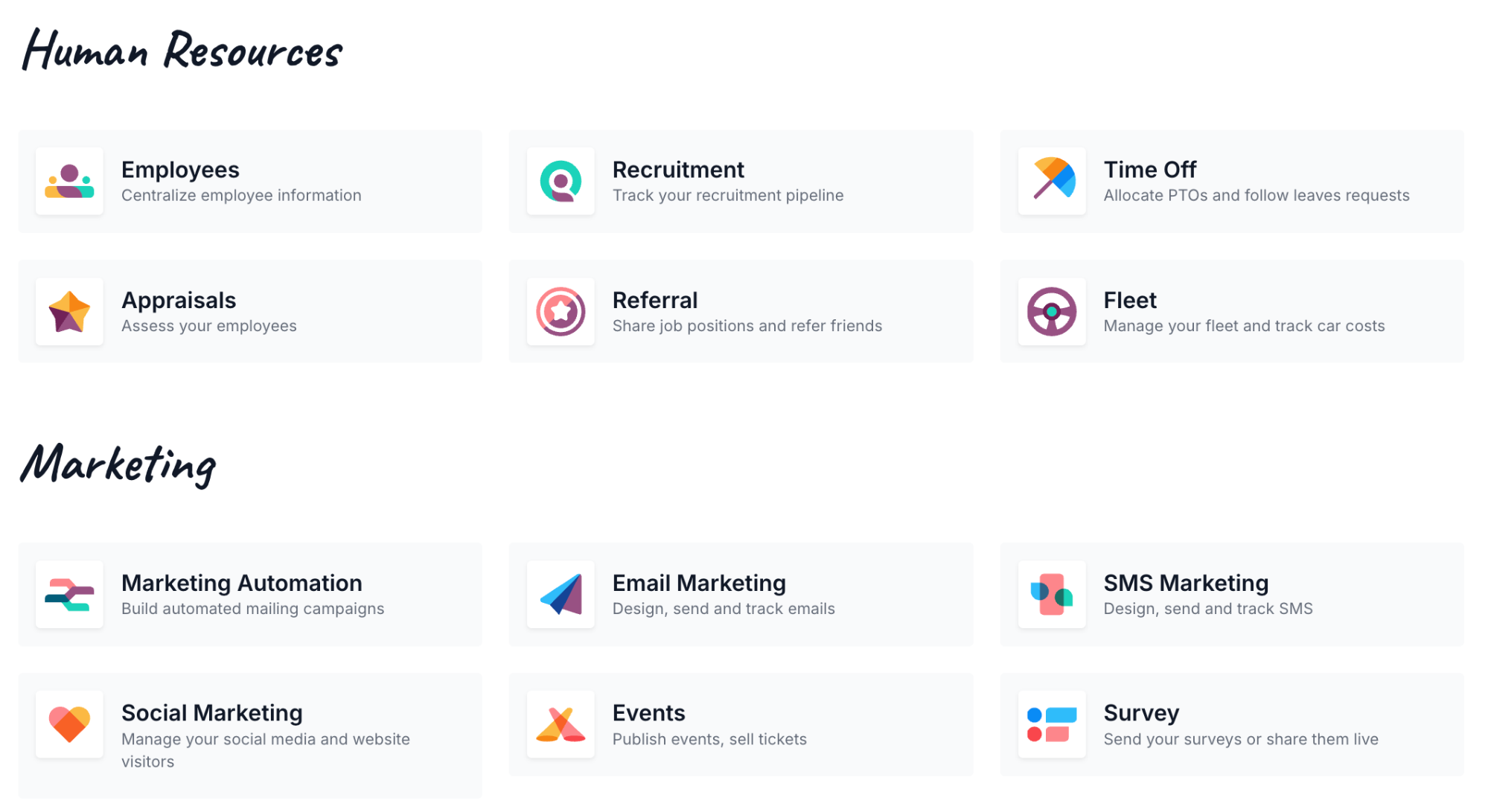
What’s not included
Implementation services, expert consulting, hosting for custom developments on Odoo.sh and certain in-app purchase credits (like SMS or AI scanning) are not part of the plan fees. Maintenance of any custom code is also up to your team.
Odoo pros and cons
The points below are based on feedback from real users on review sites like Trustpilot, Capterra and forums such as Reddit. These highlight what people appreciate most about Odoo, as well as the challenges some teams run into.
Pros
- Highly flexible and modular, so you can add only the software you need
- Tight integration across different modules like sales, invoicing, inventory and marketing
- An open-source framework gives your team more control and customization options
- The large community version makes it easier to test before paying for Enterprise
- Responsive to feedback and active in fixing bugs or adding improvements over time

Cons
- Some modules need specialist help to customise properly
- Pricing per user can feel high as your business grows
- No automated migration from Standard to Custom version
- Support can be inconsistent for uncommon issues
- The interface may feel complex for non-technical users, especially when you need effective client collaboration
- Some features seen as basic in other tools may need extra third-party apps

What real users are saying about Odoo
Let's explore the most recent Odoo reviews and see examples of its strongest and weakest points.
Businesses using Odoo often mention how much they value its flexibility and the way so many apps work together in one ERP system. Some say it helps them unify data across different parts of their work. For example, in one Odoo review, a bakery shared that it took about two months to set up Odoo, and now they run most operations through it with just a few custom tweaks. Users also mention that Odoo’s team stays in touch during onboarding and tries to help adapt the platform to fit how you work.
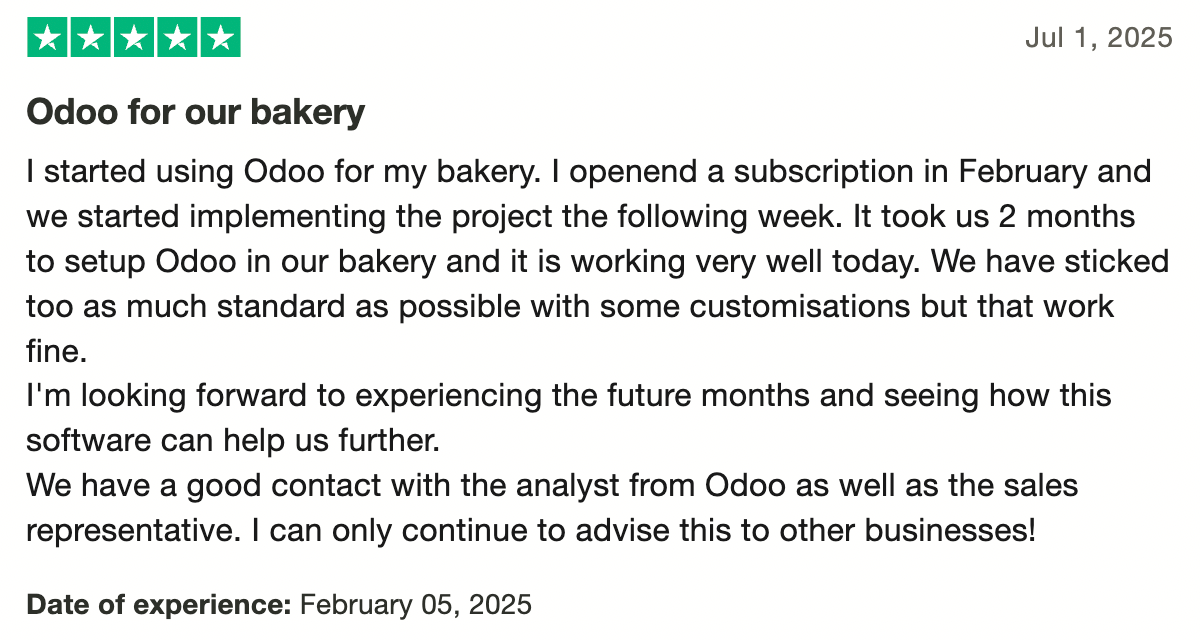
Modular software enables covering many business operations
For companies that run Odoo on their own servers, the modular structure is a big plus. You can install only what you really need, which can keep things simple at the start. And because it’s open source, there’s a large community version to test and build on before you commit to the paid version.

Managing inventory, invoicing, marketing and sales process
The main benefit users highlight in Odoo reviews is how tightly Odoo’s apps connect. One person said the real value shows up when you link different parts of your business, like quoting, invoicing, inventory and email marketing in one place. For some, that level of integration is worth the extra setup.

Complexity vs user-friendly experience
At the same time, not every experience is smooth. Some reviews mention that customizing modules can get complicated and may require hiring a specialist. Others feel the price per user can add up quickly as you grow. A few users have shared that support can be inconsistent, especially when trying to fix unusual bugs or navigate the portal for the first time.
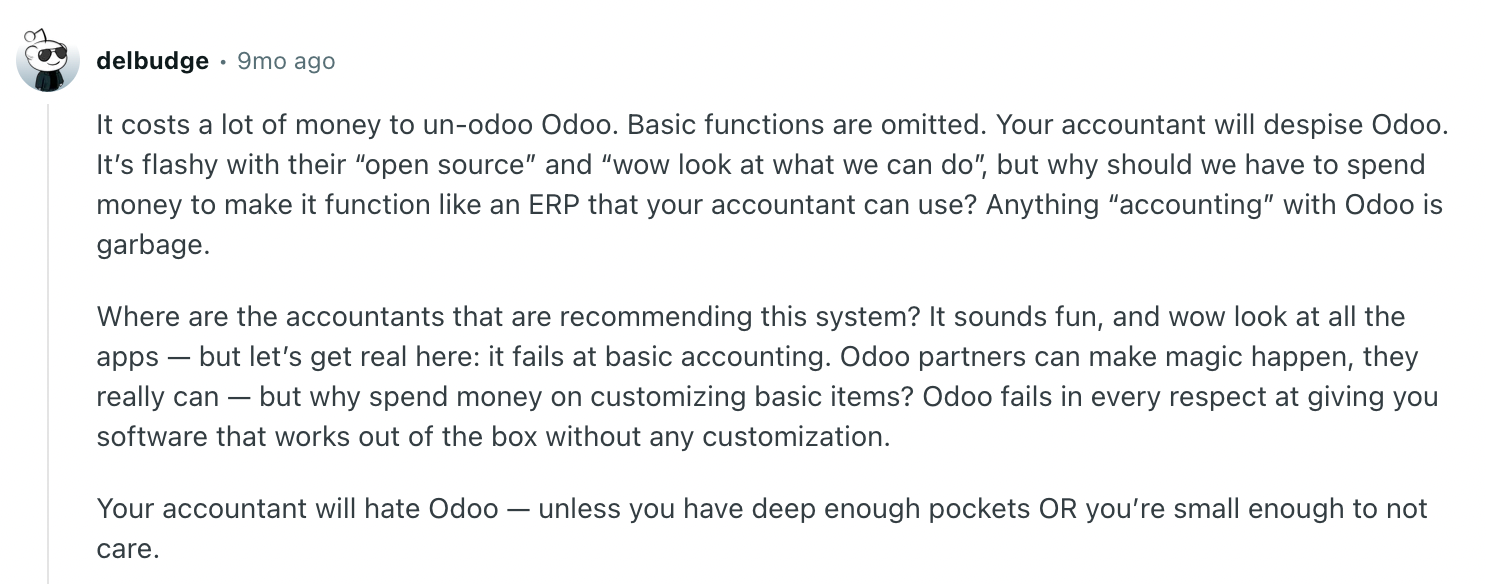
One thing many people agree on is that Odoo is responsive to feedback and often works to fix issues when they come up. That helps your business get more from the system over time, but it can take patience if you are not a technical user.
Odoo vs Clinked: A better fit for client collaboration
Odoo might be a solid choice for managing your internal business operations. It handles back-office tasks like sales, inventory, invoicing and project management, which makes it useful for teams who handle various services and need comprehensive solutions.
However, if your business depends on a strong connection and transparent client communication tools (e.g., accounting, legal, finance, healthcare or consulting), Odoo can feel too focused on what happens inside your company. This is where Clinked offers an edge.

What is Clinked?
Clinked is a secure, cloud-based platform that helps your team create customer portals and work with clients in a human and user-friendly way. You can create a fully white-label portal with your logo, custom domain and even your own branded mobile app so your clients feel they are working directly with your brand.
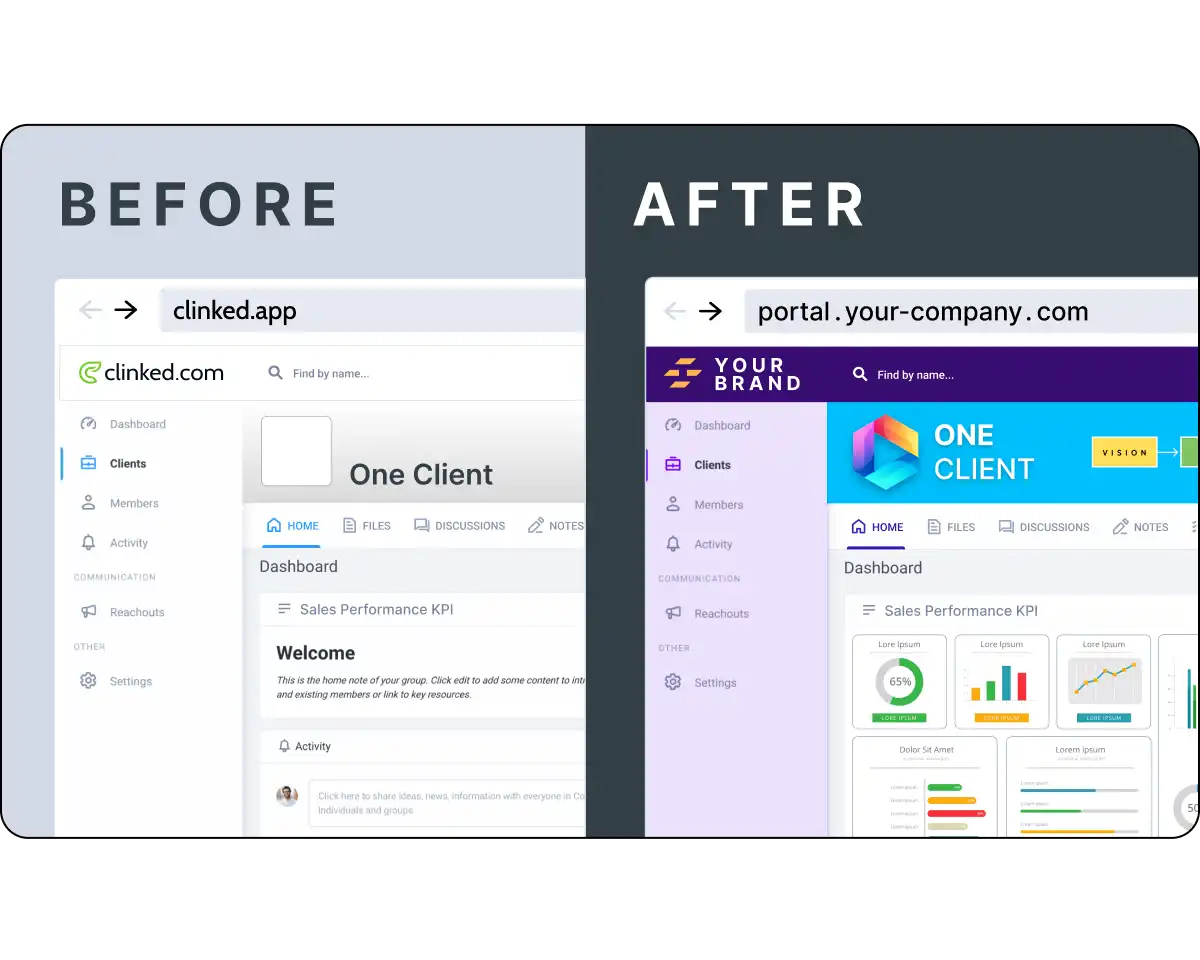
Unlike some competitors that need heavy technical expertise or long ERP implementation projects, Clinked is easy to set up and ready to use out of the box. Your team can share files, manage tasks, complete approvals and chat in real time while keeping sensitive information secure with bank-grade encryption.

Finance firms, legal teams, consultants, healthcare providers and agencies use Clinked to enhance client communication, avoid mistakes and keep work verifiable at every step. Built-in version control, audit trails and clear documentation help you check what was shared or approved when you need it.
Comparison table: Odoo vs Clinked
When to choose Clinked instead of Odoo
Odoo can be a powerful suite for managing your internal operations, but it may not be the best answer if your work depends on collaboration and client management. Clinked is more suitable when you need a clear way to share files, chat, collect forms and handle approvals without making your employees learn a full ERP system.

Choose Clinked instead of Odoo when:
- You want to collaborate with clients securely in one branded portal
- You need a white-labeled experience that feels like part of your own business
- Your team doesn’t need the full range of ERP features like complex billing or on-premise setup
- You want something your team can implement quickly without developers
- You want to discover an easier way to keep work clear for your accountant or any external partners
Whether you talk to just a few clients or handle larger projects with many stakeholders, Clinked helps you stay professional and in control. Wanna give it a try? Try Clinked free for 10 days, no credit card required.
Final thoughts: Choose tools that serve your business needs
Odoo brings together apps for sales, inventory, invoicing, accounting and more, all in one place. For businesses with large internal teams and experienced developers, it can be a powerful tool indeed.
However, many businesses find Odoo less intuitive when they need to work directly with clients. Its setup can feel complex, and its design is mostly focused on what happens inside your company.
If you want a simple, secure portal where your clients can log in, share files, complete tasks and stay updated, without the overhead of a full ERP, Clinked is a strong alternative. It keeps your communication human, user-friendly and branded as your own.
Interested? Book a Clinked demo or start a free trial today
FAQs
Is Odoo really worth it?
Odoo can be worth it if you need a flexible ERP to handle internal operations like sales, inventory, invoicing and accounting in one system. Many users see value in its modular apps and open-source options, but it does take time and expertise to implement well.
What are the downsides of Odoo?
Some users say Odoo has a steep learning curve, and customisation may require developers. Its pricing can feel unclear if you add lots of users or modules. For businesses that rely on client-facing work, Odoo’s internal focus can feel limiting.
Is Odoo a Chinese company?
No. Odoo is a European company based in Belgium. It started as an open-source ERP and now serves businesses worldwide.
Which is better, SAP or Odoo?
SAP and Odoo both cover ERP needs, but SAP is more complex and typically used by large enterprises with bigger budgets and teams. Odoo is more accessible for small and mid-sized businesses that want flexibility. If your main goal is secure, branded client collaboration rather than a full ERP suite, Clinked is a simpler choice.